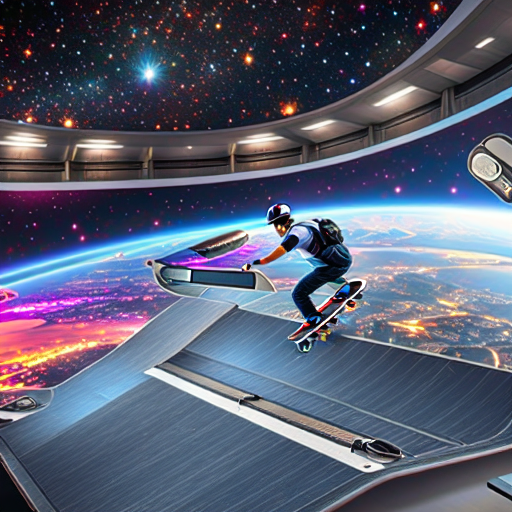Skateboarding, born from the streets and the urge for freedom, has evolved into a global cultural phenomenon since its inception in the mid-20th century. As we look ahead to the next century, envisioning what skateboarding might look like in 100 years is an exercise in imagination and speculation. While we can't predict the future with certainty, we can explore potential developments based on current trends and emerging technologies.

Revolutionizing the Board
One of the most significant changes in skateboarding over the next century will likely come from advancements in materials science and technology. Traditional wooden decks may give way to lighter, stronger, and more durable materials. Imagine boards made from advanced composites, graphene, or even materials yet to be discovered. These futuristic materials would offer enhanced performance, allowing skaters to perform tricks with greater precision and agility.

Moreover, the integration of smart technology into skateboards could transform the way riders interact with their boards. Embedded sensors and microchips could provide real-time data on speed, trajectory, and even biofeedback from the skater. This information could be displayed on heads-up displays or transmitted wirelessly to smart devices, offering insights to improve performance and safety.

Urban Skateparks of Tomorrow
In the future, urban landscapes might undergo radical transformations to accommodate the needs of skaters. With growing urbanization and limited space, skateparks could evolve vertically, with multi-level structures incorporating ramps, rails, and obstacles. These futuristic skateparks might integrate renewable energy sources and sustainable materials, reflecting society's commitment to environmental responsibility.

Virtual reality (VR) and augmented reality (AR) technologies could also revolutionize the skateboarding experience. Skaters might don VR headsets to explore digital skateparks, practicing new tricks in virtual environments before attempting them in the physical world. AR overlays could enhance real-world skate spots, providing interactive elements and challenges for riders to conquer.

Challenges and Opportunities
Of course, the future of skateboarding will also face challenges. As urbanization accelerates and public spaces become increasingly privatized, skaters may encounter more restrictions and regulations. Balancing the need for safety and public order with the freedom of expression inherent in skateboarding will require ongoing dialogue and advocacy.

However, with challenges come opportunities for innovation and creativity. Skaters have always been at the forefront of cultural change, pushing boundaries and redefining what is possible. In the next century, skateboarding will continue to inspire and influence not only the world of sports but also art, fashion, and technology.

As we peer into the crystal ball of the future, the possibilities for skateboarding are limitless. The next century promises to be an exciting journey for skaters around the globe. While we can only speculate about what lies ahead, one thing is certain: the spirit of skateboarding will endure, driving innovation, creativity, and camaraderie for generations to come.


